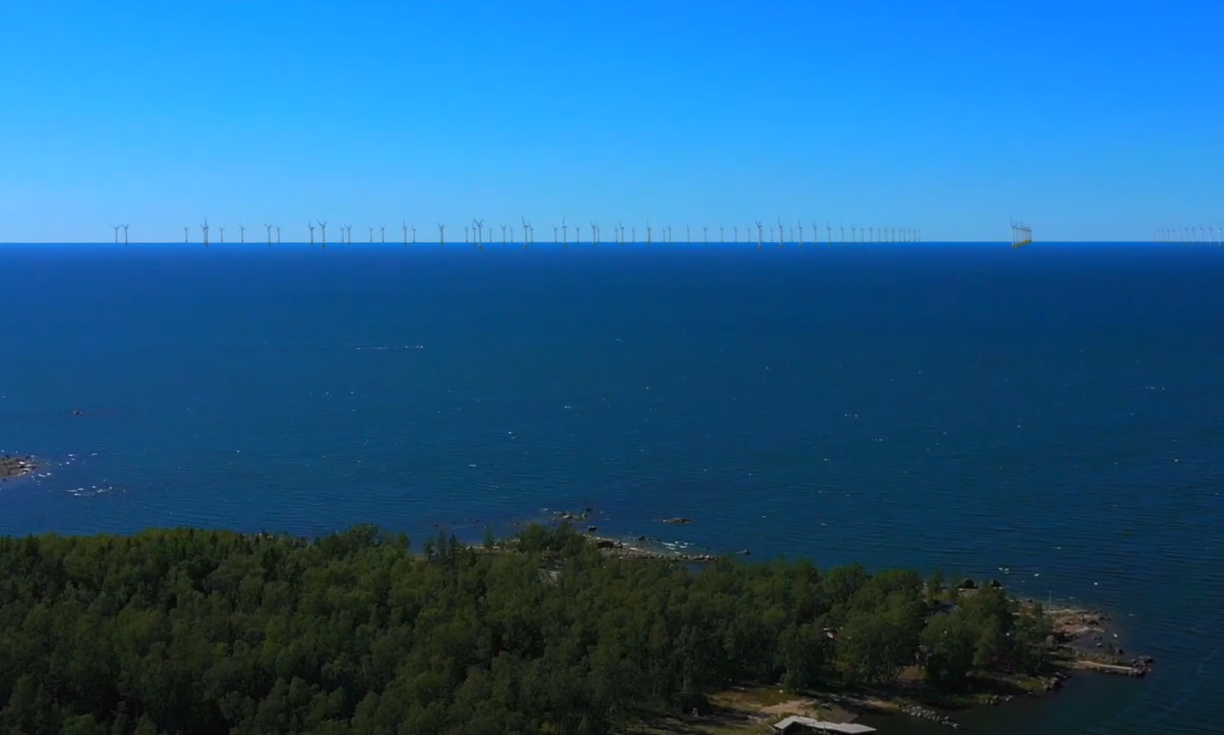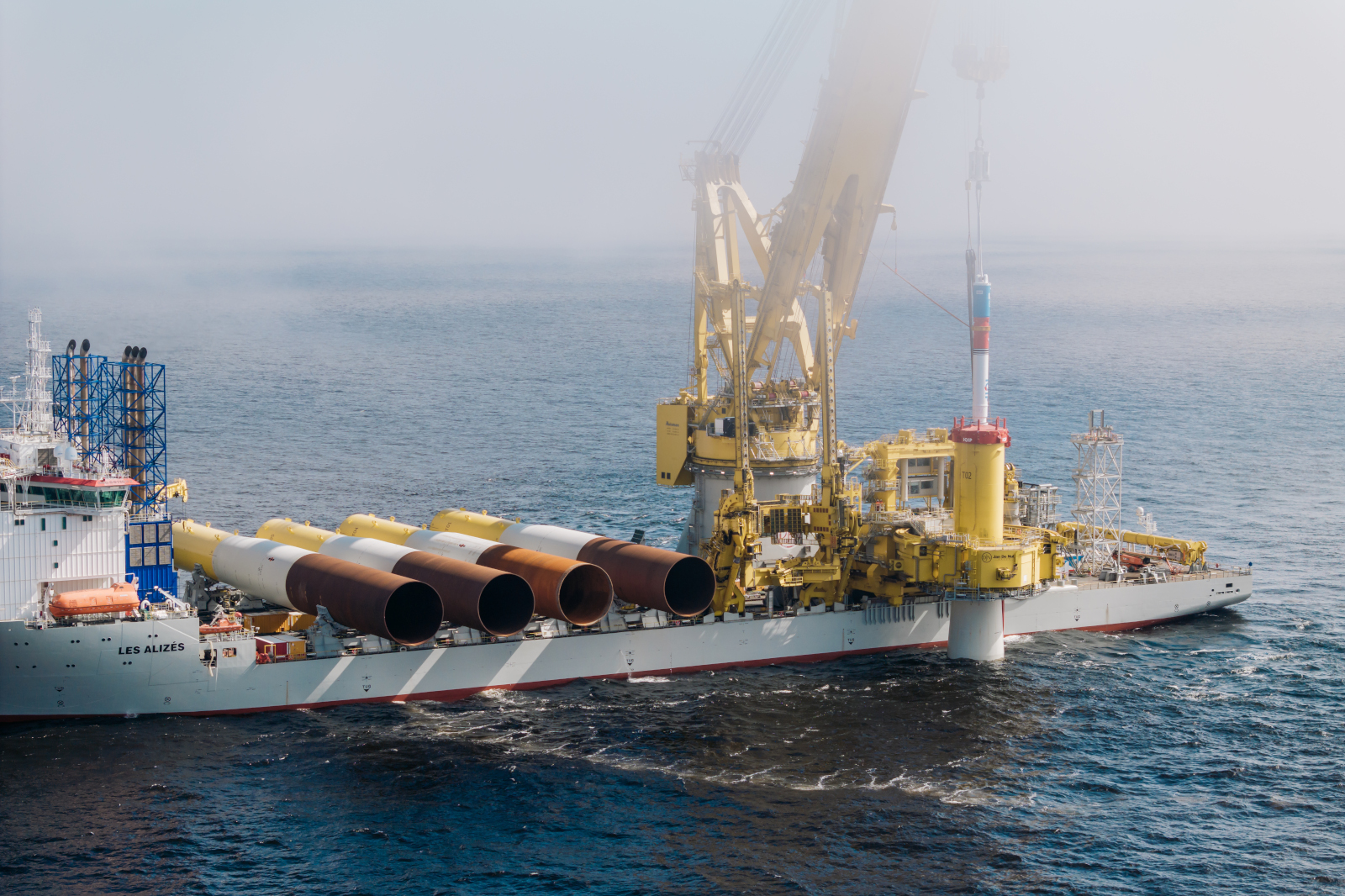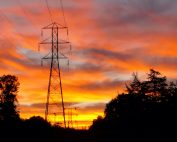Finland currently has an offshore wind farm project in Korsnäs, on the southwest coast of Finland, 15 km from the coast. In early 2022, work will begin on the environmental impact assessment and zoning of the installation.
According to Pertti Tapio, project manager at Metsähallitus’ wind power division, preparatory work and measurements are already being carried out in the area designated for the farm.
– “Wind measurements will begin next week. A wind measuring mast is currently being raised on Bergö Island. Work is underway to lift it. Next week the final pieces will be lifted by a helicopter”, Tapio said in a comment for Yleisradio in early December.
The final implementation of the project will take several years. The Korsnäs offshore wind farm (1300 MW) could be commissioned in 2028 at the earliest. In the first phase of the project, 70-100 turbines with a nominal capacity of 12-20 MW each will be built at the Korsnäs offshore wind farm. The Korsnäs project will therefore be the first large-scale offshore wind farm in Finland when it is completed in the late 20’s of the 21st century. At this stage, the annual output of the offshore wind farm is estimated at around 5,000 GWh. This would be sufficient, for example, to meet the annual electricity demand of 250,000 single-family houses, including electric heating. Finland’s first offshore wind farm at Tahkoluoto in Pori generates about 155 GWh of electricity per year. The size of the project area is 220km2.
We read on the Metsähallitus website that the location of the offshore wind farm at the beginning of the project has been revised after studies, so that the project area is further away from the Kvarken Archipelago World Heritage Site, nature reserves, and fish spawning grounds.
Partner and ports are sought to build the farm
One of the prerequisites for building offshore wind energy is good ports. There are three major harbours close to the Korsnäs project area: Kaskinen, Kristiina and Vaasa. There are railroads going to these ports. The operational and storage capacity of the ports is currently being investigated.
Metsähallitus is currently looking for a partner that meets sustainability criteria to build the wind turbines, and continue the cooperation after the project is completed.
Offshore wind projects have not progressed significantly in Finland in recent years. The reason may be high construction costs and property taxes, which are currently about three times higher than for onshore energy.
Meetings with residents. Investor answers questions and concerns
Metsähallitus holds online meetings to answer residents’ questions. For example, on December 2, inquiries about the project also came from Swedish residents. Questions were raised about fish, particularly herring spawning grounds and fishing areas. The developer has indicated that fish and fish species have been considered when locating the project area. The survey is conducted by Alleco, a pioneer in research diving in Finland. No shoals or shallow areas important for fish reproduction occur in the project area. Research will continue with new methods in 2022.
VEBIC experts from the University of Vaasa have started a bird survey of the farm area. According to studies along the main migration route along the coast of the Gulf of Bothnia, birds collide with wind turbines very little even during migration. Birds have the ability to detect and avoid power plants. The study of flying organisms will continue for several years.
In response to questions about the noise made by the power plant, the developer said that no noise from the power plant could be heard on the coast. The sound carries along the water for up to 3 km. The bearing is also hindered by other ocean noises: wind and waves. According to a two-year study conducted in 2020 by VTT and its partners, they found no evidence of health impacts from wind energy-related infrasound.
The environmental impact assessment, which will begin in 2022, will examine the impacts on the Kvarken World Heritage Site, implementation and mitigation options, and the views of various stakeholders. The environmental impact assessment will take about two years.
The area of the wind farm is located in state waters in the municipality of Korsnäs. Therefore this municipality will increase the property tax revenue according to the Finnish law. Due to their more expensive construction, offshore wind farms are subject to higher property taxes than onshore wind farms. Property taxes for offshore wind turbines have already been reduced. The annual property tax revenue from an offshore wind turbine could be 70,000 Euros per year, or several million Euros for an entire farm.
Source: Yleisradio, Metsähallitus














